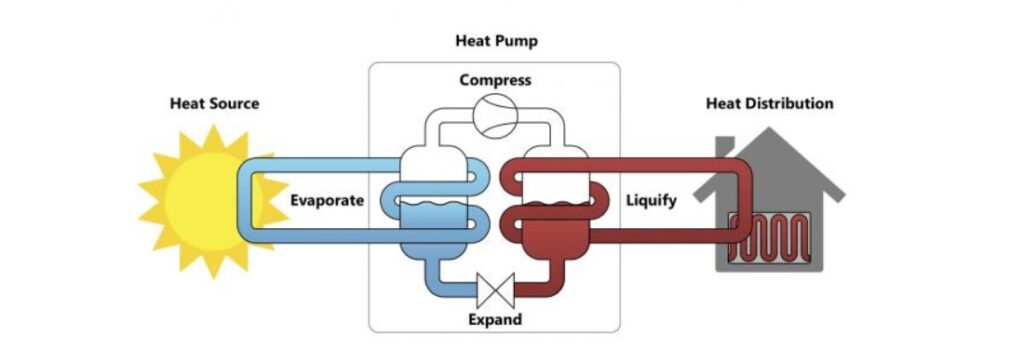By: Louisa Gaylord
2023 is on track to be one of the hottest years across the globe. Warming occurs at double the global rate in Arctic regions, necessitating the need for viable decarbonization options that help move away from dependence on fossil fuels. This summer, one of UW Data Science for Social Good (DSSG) teams has been researching heat pumps for heating and cooling use across Alaska, and how to measure their efficiency.
The DSSG project is led by Erin Trochim, a Research Assistant Professor from the Alaska Center for Energy and Power at the University of Alaska, Fairbanks. She was previously involved in our DSSG program in 2022, where her team developed geospatial methodology using machine learning to estimate heating use in Alaska. This year’s project focuses specifically on heat pumps and whether they are a feasible option to support decarbonization efforts across the state. The project team also includes Data Scientist Madelyn Gaumer from the Pacific Northwest National Laboratory, and four Student Fellows: Aminat Adefolu (Central Michigan University), Silas Gifford (UC Berkeley), Katherine Grisanzio (Harvard University), and Brian Leung (University of Washington).
There are a number of different types of heat pumps, but essentially they move hot or cold air either into or out of a building. Heat pumps use electricity to move cool air inside a building (and warm air outside) during the summer, or vice versa during the winter. Unlike air conditioners or furnaces that generate their own temperature-controlled air and circulate it, heat pumps merely transfer existing heat and have the potential to be an incredibly energy-efficient and economical option in the right situations. The DSSG group is exploring whether heat pumps are feasible and practical in places like Alaska that experience extreme cold temperatures.

The team decided to measure and compare three indicators that would help determine if heat pumps are a good choice for the residents of Alaska:
- Cost-effectiveness – how much money can be saved if heat pumps are the primary heating source, factoring in initial installation and ongoing maintenance costs;
- Feasibility – what proportion of heating needs can be met by using a heat pump;
- Green-ness – the amount of CO2 emissions that will be reduced annually compared with other fuel sources.
One of the issues the DSSG team faces is how to best divide up Alaska geographically for measurement and analysis. Alaska has the most land area of any state in the US – bigger than Texas, California, and Montana combined. Large swaths of wilderness are unpopulated; although cities account for only 2.1% of Alaska’s area, they contain nearly 70% of the state’s population. How can the team subdivide the land area into a manageable number of units to compare, while still capturing the detailed climate and energy use data of the most populated regions?
The goal is to produce an interactive resource for local advocacy organizations like Alaska Heat Smart, Alaska policymakers, and researchers to see where heat pumps are an efficient solution. This tool will combine data from the US Census, climate data, and building info from across the state to assess the efficiency and viability of heat pumps in Alaska and other Arctic regions as well.
Join us on Wednesday, August 16th from 2:30 to 3:30 p.m. for the final project presentations when both 2023 teams will share their findings from the 10-week DSSG program, and any next steps for implementing this research in the future.

